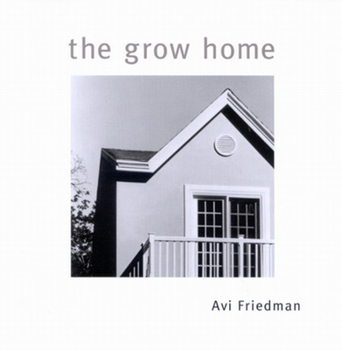The Grow Home
Select Format
Select Condition 
Book Overview
With economic restructuring, demographic shifts, and lifestyle changes, the traditional family - working father, stay-at-home mother, two to three children - is no longer the norm and the need for smaller homes at moderate cost has skyrocketed. The first prototype of the Grow Home was built on the campus of McGill University in 1990 and more than one thousand units were built across North America and Europe in the first year alone. In this illustrated guide, Friedman describes the background, conception, and construction of these modest (14" x 36") homes. He details their construction for prospective owners, builders, and architects, showing how past and contemporary precedents have been transformed and how the first versions were adapted by the building industry. Visits to completed Grow Homes shed light on why such homes were purchased and the process by which they "grew." Friedman also shows how the design has been adapted for prefabrication to meet the needs of the developing world. He describes the contribution that small-unit design makes to saving valuable natural resources and shares his experiences in planning communities based on the Grow Home. The Grow Home reveals the development and history of a concept that revolutionizes the home and building industry, has been translated into over 10,000 housing units, and has received, among many accolades, the United Nations World Habitat Award.
Format:Hardcover
Language:English
ISBN:0773521682
ISBN13:9780773521681
Release Date:February 2001
Publisher:McGill-Queen's University Press
Length:206 Pages
Weight:1.40 lbs.
Dimensions:0.7" x 8.8" x 9.8"
Customer Reviews
1 rating
A good book about small housing
Published by Thriftbooks.com User , 15 years ago
This book is a good book about row, or town houses. It is not a picture, or one with a lot of plans and details. However, what plans and drawings that are present, and there are many are supported by the text that is worth reading. The book presents a frame work of how one might look at the issues of housing in general, and town houses in particular.






